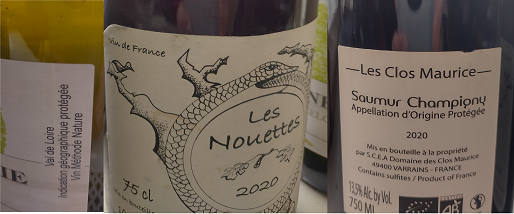Understand French Wine Appellations
You can think that wine regulation is something recent, from the last part of our industrial and mass consumption time. But regulation was present since almost the beginning of wine history. Take the Roman Emperor Domitian in the first century or take the Duc of Bourgogne, Phillipe le Hardy during the 15th century, they concocted laws to regulate how and where wine can be made. Politicians and people in power always wanted to control how the wine could be produced or sold. The wine was precious produce. They did so for several reasons; to avoid overproduction, to control the taste of the wine, or to boost commerce.

Controlling the quality of the wine, increasing the prestige and the sale of local wines, and avoiding overproduction, remain major incentives for the authorities in France and elsewhere.
In 1905, the first law in France created the notion of controlled appellations. But it was only a geographical delimitation, appellation like we know these days, like Chablis, or Beaujolais, but anyone could do anything.
Another law in 1910, prohibited adding sugar to normal wine (vins tranquilles, meaning not sparkling or dessert wine), it is the first attend to increase the quality of the wine but it wasn’t linked to a region or a tradition.
In 1935, a law created the INOA (Institut National des Appellations d’Origine). This organization is linked to the french ministry of Agriculture, its goal is to preserve appellations, not only the geographic limitation, or terroir, but also the savoir-faire, the traditional winemaking process. It did so by creating specifications; authorized grape varieties, vinification methods, plant age, harvesting mode,… along with the geographic situation. This is the birth of the AOC (Appellation d’origine contrôlée). It protects a product and its producers. No one is allowed to use the appellation outside the area and without following the corresponding specifications.
Today there are 319 AOC, and since 2002, thanks to the European Union, an AOC is also an AOP (Appellation d’origine protégée), making AOC the equivalent of the Denominazione di origine controllata (DOC) for Italy, Denominação de Origem Controlada for Portugal or Denominación de Origen Calificada (DOCa)…
Some AOC appelations can use a second level of classification, the “Crus” classification, “Crus Classés”, “Premierss Crus”, “Grand Crus”. Not all AOC has a “Crus” classification and when they have one AOC, this classiffication is specific to the appellation.
Beside, AOC, you can find, since 2009, an other appellation, IGP (for Indication géographique protégée), there are 73 IGP appellations for wine. To qualify for the indication the wine needs to follow a specific process and must be linked to a specific geographical area.
This geographic area is generally larger than for an AOC. It protects a region and the process. Pays d’Oc, Côtes Catalanes or Val de Loire are exemples of IGP.
The last category of french wine appellation is “Vin de France”, this appellation doesn’t require any fixed process or any link to a geographic area. Winemakers can use any grapes or process It was created in 2010 to replace the “Vin de Table” appellation.
Now, you can ask, is buying wine with an AOC or an IGP indication guaranteed to have a bottle of good wine. Not really. These appellations are here to protect a product, its process, and its geographic area, but an appellation is not here to guarantee the taste of the wine. An appellation, AOC, AOP or IGP protect a process, a “savoir faire” and a geographic area, a “Terroire”. But the taste of the wine doesn’t depend only on these two elements. The year, the exposition to the sun, the soil composition, the age of the plants, … all these things influence the taste of the wines. Alongside, the talent of the winemaker is crucial for creating a delectable wine. The work on the soil and with the plant, harvesting, winemaking, and aging, depends on the talent of the winemaker. Thinks about an Ikea kit table. Everybody gets the same process, the table assembling manual. But some people will get a perfect table, and some others like me will end with a shaking table and a few more screws. For the same appellation, you can have just average (and sometimes bad) wines or wonderful ones. And what about the “Vin de France” appellation? This one doesn’t require any process. Does it mean that it’s reserved for bad wine? Originally it was supposed to replace the old “Vin de Table” appellation, mostly wine table. But some natural winemakers started to use this appellation because of the constraints linked to the appellations. With an appellation, you cannot change the process and you cannot be more creative. Pet Nat, funky wine, or simply experimentation is not possible, but with the “Vin de France” appellation, yes. Even with Vin de France, the winemaker job is the most important criterion. Winemaking is an artisanal, and sometimes artistic process. The most important part is the work of the winemaker.